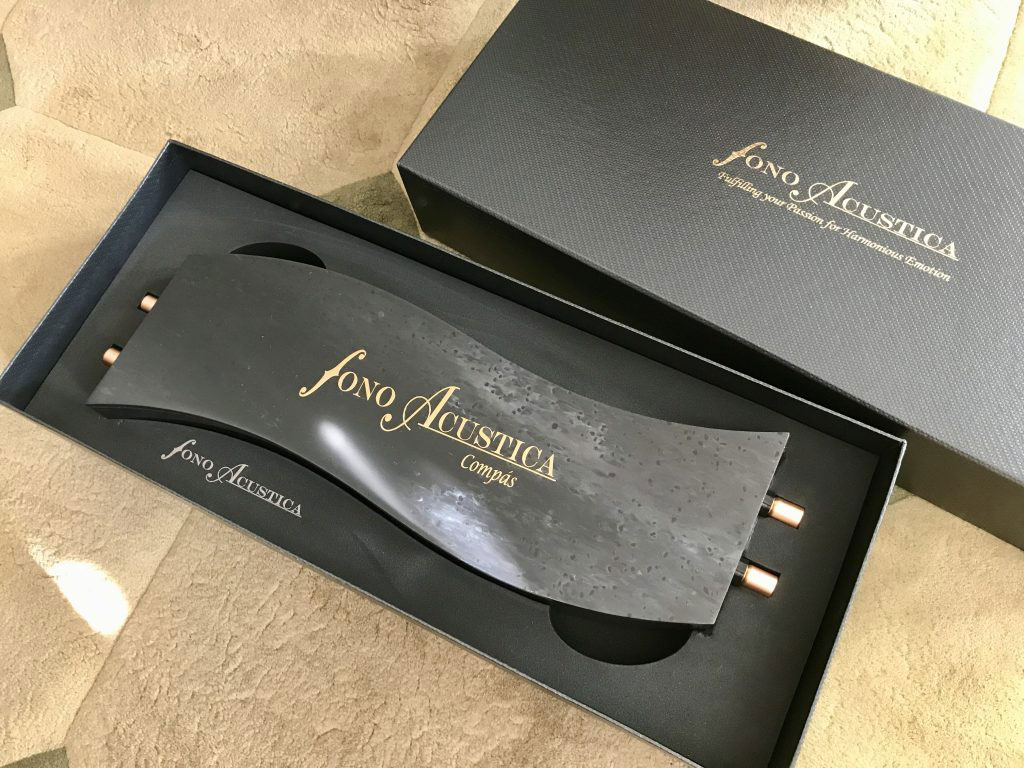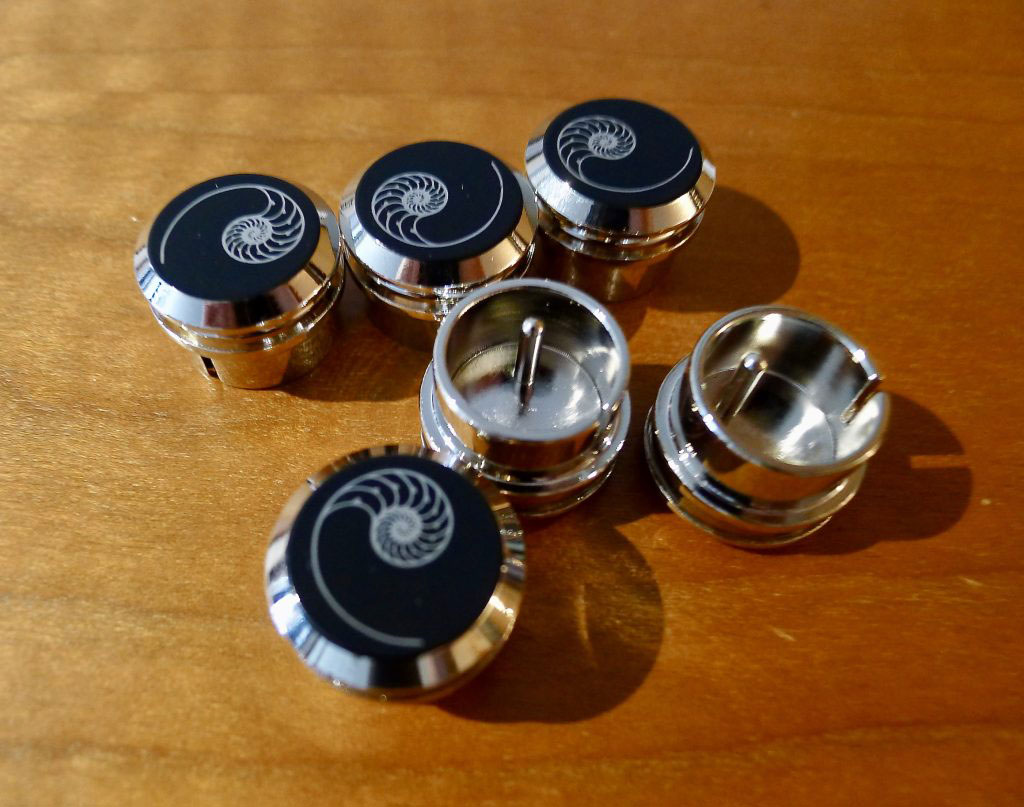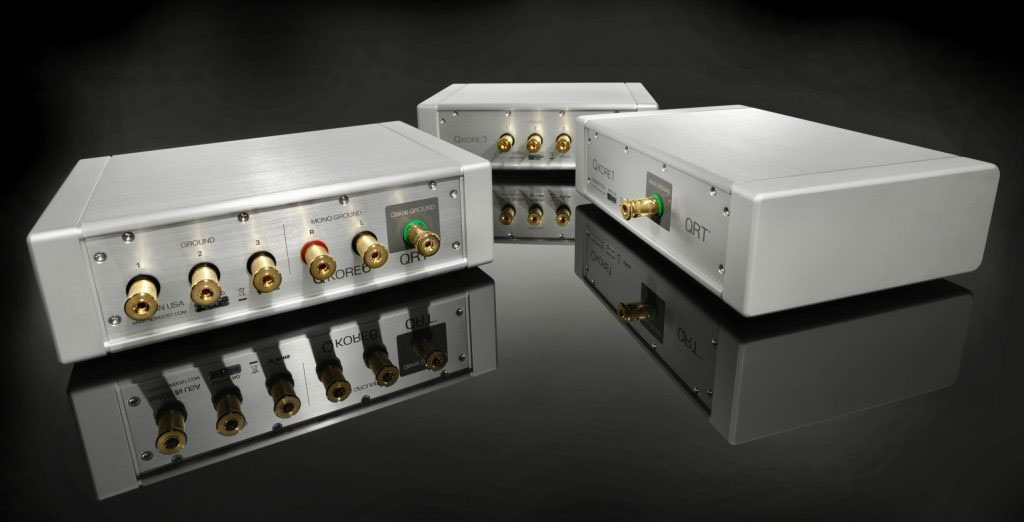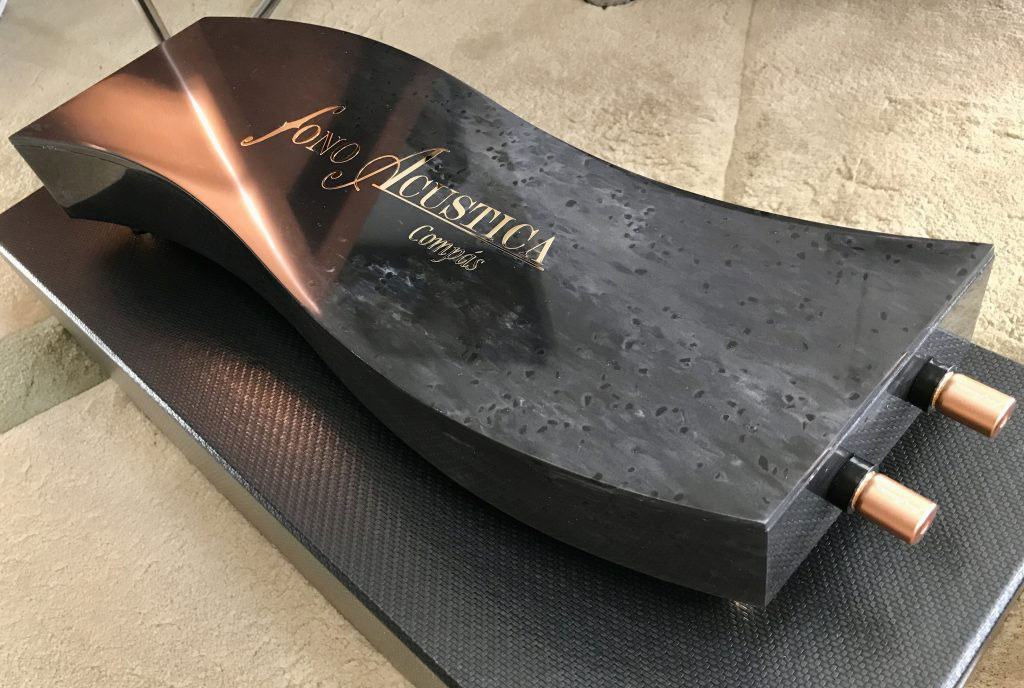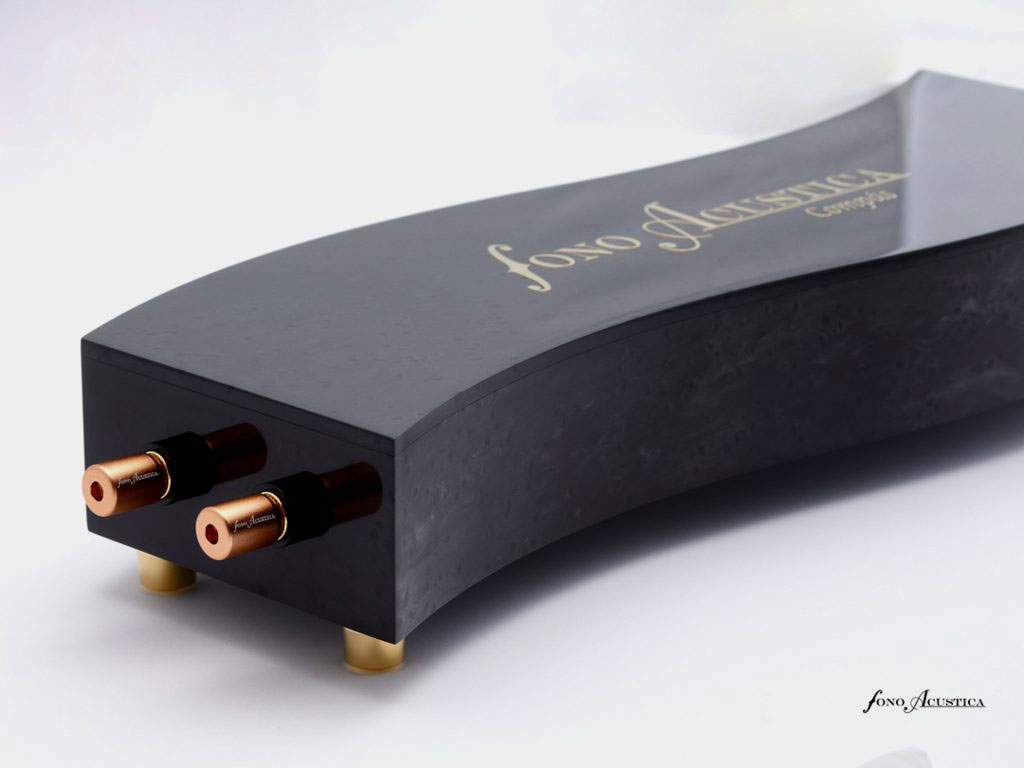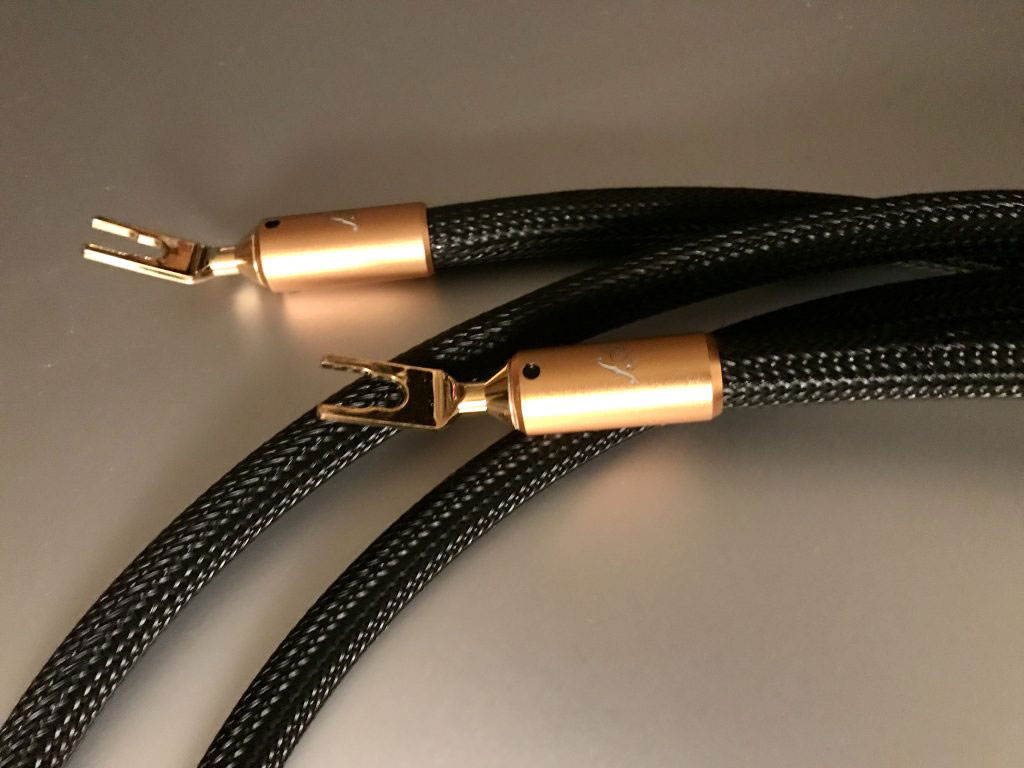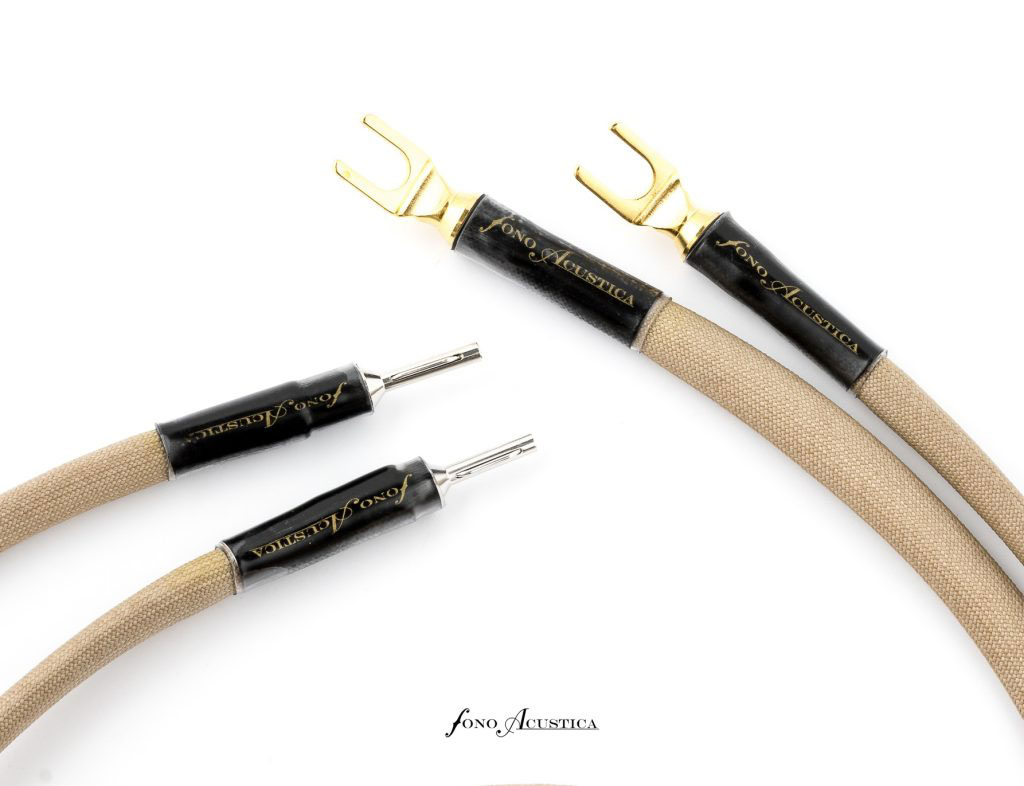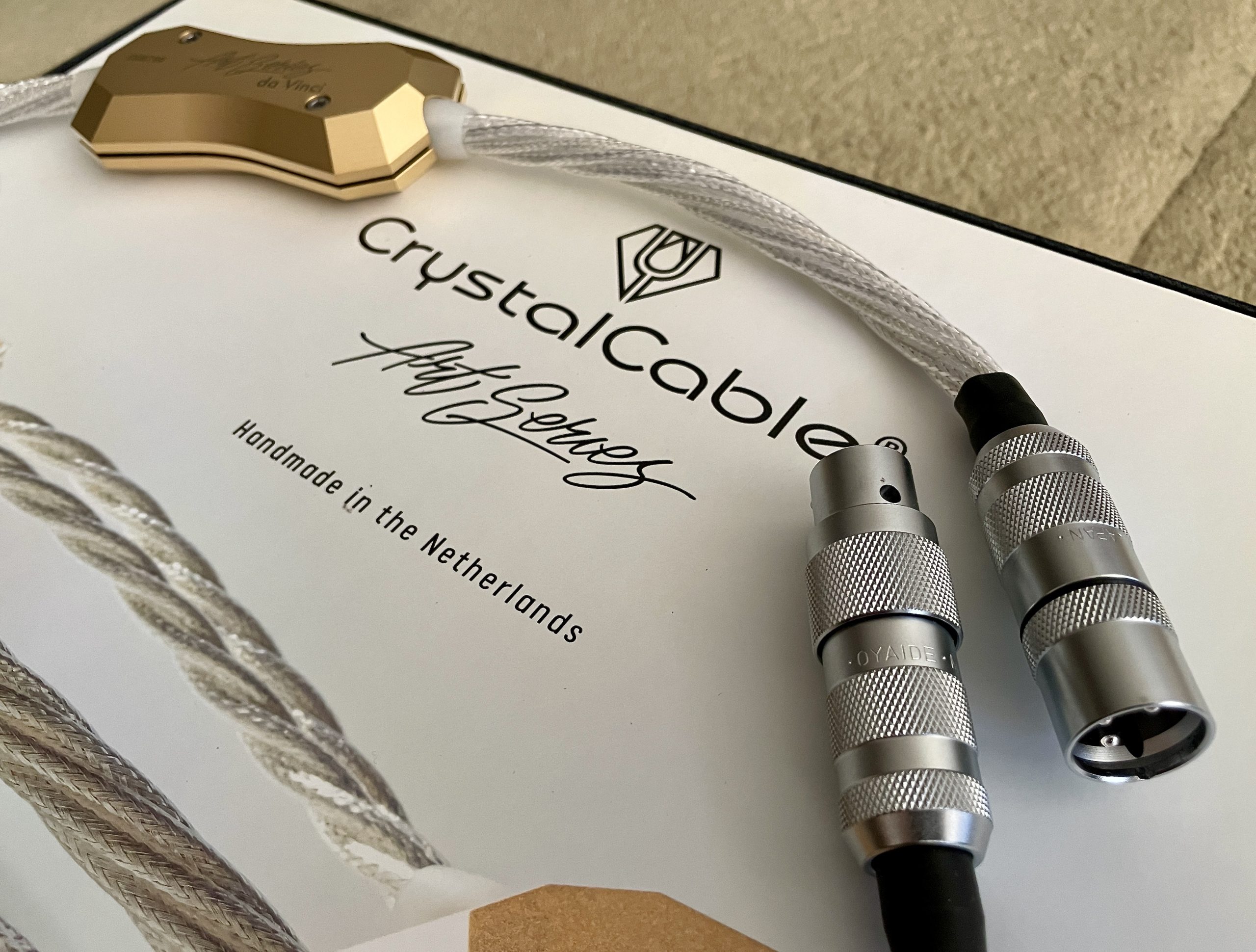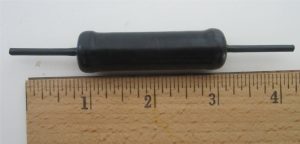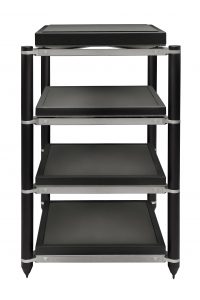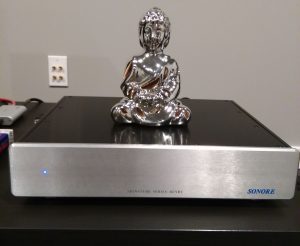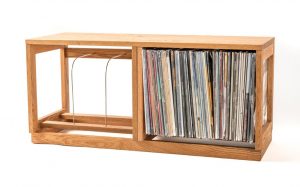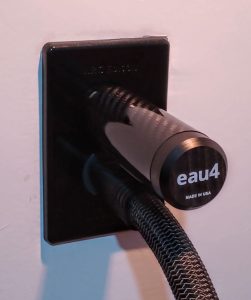As in days of olde when men strode forth to slay dragons (or chase windmills), the modern-day audiophile is on a crusade. This villain appeared relatively recently, coincident with the world economy's tectonic shift to the Information Age. As many have observed, Radio Frequency Interference wasn't an issue for audiophiles circa 1970. Nowadays, it might be the most important front in the quest for better sound. The contemporary domicile is drowning in high-frequency noise and stray voltages, as almost every household appliance generates RF. We know it is degenerative for our audio systems; keep your fingers crossed it won't eventually prove harmful to humans. There's much we have to learn.
RFI Combat
My first-level engagement with the daemon made use of Cardas RCA and XLR Caps to plug RF entry points on my components. They proved beneficial in quieting the system, so I went a step further with Audioquest Rj45 and USB Noise-Stopper Caps. The rule of thumb is to plug as many open sockets on your components as you can. The heavy artillery was brought in with the QKORE Ground Units from Nordost, and the clean-up operation attained liftoff velocity. This resulted in advances in Hi-fi, though not as much on the musical front. One side effect that many have commented on is the hint of dryness that these devices impart, as if the air on the stage is evaporating. Still, the gains in noise reduction and purity made it worthwhile.
Nordost QKORE Units
No New Components
I continued practicing mindfulness regarding RF propagation, addressing things like cable management (cable lifts and routing are important) and general system tuning via platforms and footers. And now, after many years into this effort, the system just recently turned a corner. The dryness dissipated; dynamics began to ebb and flow; the top end eased up; focus and resolution, clarity and purity, all were solidly advancing. Notice that nowhere did I mention changing components; the crusade involved third-party accessories and implementing best practices.
Gradually, something jewel-like began to emerge and then, only a month after achieving this pinnacle, I got wind of a new product called the Compás Speaker Ground System from Fono Acustica, an audio boutique based in Spain. In an email exchange the proprietor, Felix Avalos, whet my appetite with this teaser:
The Compás is a speaker grounding device which provides a passive approach to obtaining an artificial, "clean" earth. The exterior is made of ceramic composite material and the inside is filled with multiple mineral components which allow dissipation of ground electrical waste and controls RFI that disturbs speaker performance.
My thoughts immediately went to the popular devices marketed by Nordost, Synergistic, and Entreq. I emailed Felix, "From your description, the design sounds similar to what Nordost and Entreq are doing for components." As is his style, Felix wouldn't give away too much.
I know Nordost and Entreq ground boxes very well. They "dump ground impurities" out of electronics. Our Compás goes further than that. It is a virtual ground tuned exclusively for speakers. Once you have listened to the Compás, I can then share a bit more. I don't want to spoil your initial reaction.
All of these ground noise systems are designed to drain impurities from your component's electrical ground. But there's a big gap in the treatment plan—none of them address the speaker. Enter the Compás.
Compás Installation
Installation is a cinch. Like those other brands, the Compás is passive and doesn't plug into the wall. I placed it between the speakers, then ran a cable from the Compás to the negative binding post of each speaker.
A Model for Good Reproduced Sound
Among the high-priority items on the reviewer's checklist you'll find soundstaging. The listener should perceive a collection of instruments/objects arrayed on a stage with fixed dimensions in the space between and around the speakers. Audiophiles crave the illusion of layered depth, and they like it when the instruments/objects are segregated; the more separation, the better. Lynn suggested a pictorial model for this type of reproduced sound would be parallel lines projecting forward from the plane of the soundstage to the listener's ear.
For a long time I had that kind of sound, but lately I've been moving towards something less artificial. To that extent, I pulled out many room treatments and tweaks that increase grip but impede flow, and the gains in naturalism came steadily. What I have now has plenty of definition, detail, and texture, but is a bit soft compared to many well-regarded Hi-fi systems. Dimensionality took a hit. Depth became truncated; width is often constrained to the center and does not extend across from speaker to speaker. Images seem flattened to two dimensions. I miss this audiophile candy. Ideally, both worlds would be represented: dimensionality and naturalism.
The Shorthand Vernacular
Every enthusiast pursuit develops a shorthand vernacular; we recycle stock Hi-end phrases all the time. Occasionally, an anomaly crops up that doesn't fit inside the box and the door opens to get creative. The task is to find the words to describe the novelty. This can be both challenging and stressful because you're in uncharted territory, plus there's the likelihood most audiophiles won't know what you are talking about. Nevertheless, stretching like this is where I find most satisfaction.
Evaluations usually come fast for me—not this time. The Compás on first impression sounded like inserting an FA Armónico interconnect, as it had that kind of sonic signature. In the following days, we grappled with what it was doing in the spatial domain. We had entered the realm of the extra-curricular.
Many things remained the same when the Compás was attached to the speakers: soundstage width and height; the stability and mapping of the stage; tone and timbre. But the Compás invoked another model of reproduced sound—the projection from the soundstage was no longer in parallel lines. Once again, visualize each instrument projecting sound from the stage. Only, as it travels across the room, it disburses and assumes a V-shape. By the time it arrives at the listener, the instruments are no longer confined within hard and fast boundaries, there is even some overlapping with their neighbors. Notes have a little extra resonance and decays tarry a bit longer. The texture of the soundstage is ultra-smooth with nary a nit or burr to mar the finish.
You would think these qualities—smooth and silky, overlapping image borders, long decays—introduce blurry vision. Not so. Somehow there is less ambiguity about each instrument's musical contribution. Inner voices became easier to pick out, just as I found with the Armónico interconnects.
The Compás Brings Dimensionality
The Compás singlehandedly introduced wowza-level spatial dimensionality. From the ground up, the entire orchestra has palpable mass and roundness. It's as if the instruments are hanging in layered space like plump fruit on the vine. The sensitive listener will perceive a friendly interplay, a sort of conversation in progress with the melody being passed around. One instrument speaks, then another picks up the thread, and so it is passed around. Musical phrases are bouncing from front to back, side to side, almost creating a swirling motion.
Audiophiles talk about musical flow, referring to the stream of notes in the temporal domain; the Compás was doing something analogous in the spatial domain. This is the first time I've come across this in reproduction. Of course, in nature it occurs all the livelong day. In audio playback, the usual thing is discrete voices speaking in turn but not connecting to each other.
Compás Cosmetics
The Compás weighs about 7kg (15 lbs.) and resembles FA's trademark long, narrow, curvy "S" logo. The inside is filled with multiple mineral components to dissipate ground electrical waste. If you hoist the Compás and give it a shake, you can hear the granular contents shift, like sand in an hourglass. The chassis is made from a block of black Corian material, which is smooth to the touch but somewhat mottled in appearance (visible in my photos). My sample was an early demo unit and evidenced wear and tear. I'm assured production units will be up to Fono Acustica's usual standards.
There are a pair of binding posts on each end to support bi-wired speaker designs. The feet and binding posts are nicely finished gold-plated solid steel. FA's solid core wire alloy is used internally. Because of the unit's curvy footprint, width is hard to gauge: my guesstimate is roughly 6 1/2" wide, by 20" long (including the binding posts), and 3" high (including the feet).
I placed it between the speakers on the carpet, initially with wood blocks under it. At some point I removed the wood blocks and the sound improved, which made me experiment with other footers. I encourage you to do the same.
Ground Cables
The Compás is sold without any ground cables, although they are needed to connect it to the negative binding posts of each speaker. Felix says any good quality cable can be used. However, to satisfy customer demand, FA designed two versions with different metals and price points: silver/copper or silver/gold. The silver/gold Ground Cables I received have a braided black outer covering, with a large circumference for a dedicated ground cable. They are a little thinner and not quite as flexible or squishy as the FA Armónico interconnect. Like the Armónico, they weigh very little and the terminations are very fine. My sample had a rhodium-plated copper banana on one end and a handsome gold-plated copper spade at the other. (The customer specifies spade or banana terminations at time of ordering.) The ground cables are not directional.
Conclusion
The system keeps expanding, even as my component list remains static. The better part of this growth are tools that reside on the floor to repulse the RFI daemon. It's getting so there's barely a footpath to the window and it's starting to crimp the space around the speakers. (Speakers need lots of free space around them to develop the sound.) The last thing I need is another box and more wires running to the speakers.
We have strong weapons at our disposal from Nordost, Synergistic, and Entreq to drain impurities and RFI from our component's electrical ground. Still, I knew the engagement with RFI wasn't over, as I speculated recently in a Nordost QKORE Ground Unit HERE:
I'm tempted to say the system is clean after installing Premium Wires everywhere, but I won't fall into that trap again. You can be sure the RFI daemon lurks and will show up again after the next advance goes in, whatever that might be. That there will be a next advance is extremely likely, as RFI combating is on the frontlines.
Two months later, I installed it. What does the Compás Speaker Ground System from Fono Acustica sound like? Very different from the others. The Compás works its magic in the spatial domain, promoting a sense of the musicians interacting in layered space. There is an energetic flow passing from one instrument to another. The stage has a natural feel, quite unlike the artificial emptiness created by many modern components.
Guess who's thinking he's got the upper hand now? Could it be the Compás is the final link? I'll only speculate that the Compás is today's best solution for the speaker segment. Reluctantly, I have to own up: the Compás is doing something mighty attractive. I would be hard pressed to do without it.
Compás Speaker Ground System
Retail: €5,000, $5,713 USD
Ground Cable
Retail: Copper/Silver €1,180, $1,348/2m per cable
Retail: Silver/Gold €4,240, $4,845/2m per cable
Fono Acustica




